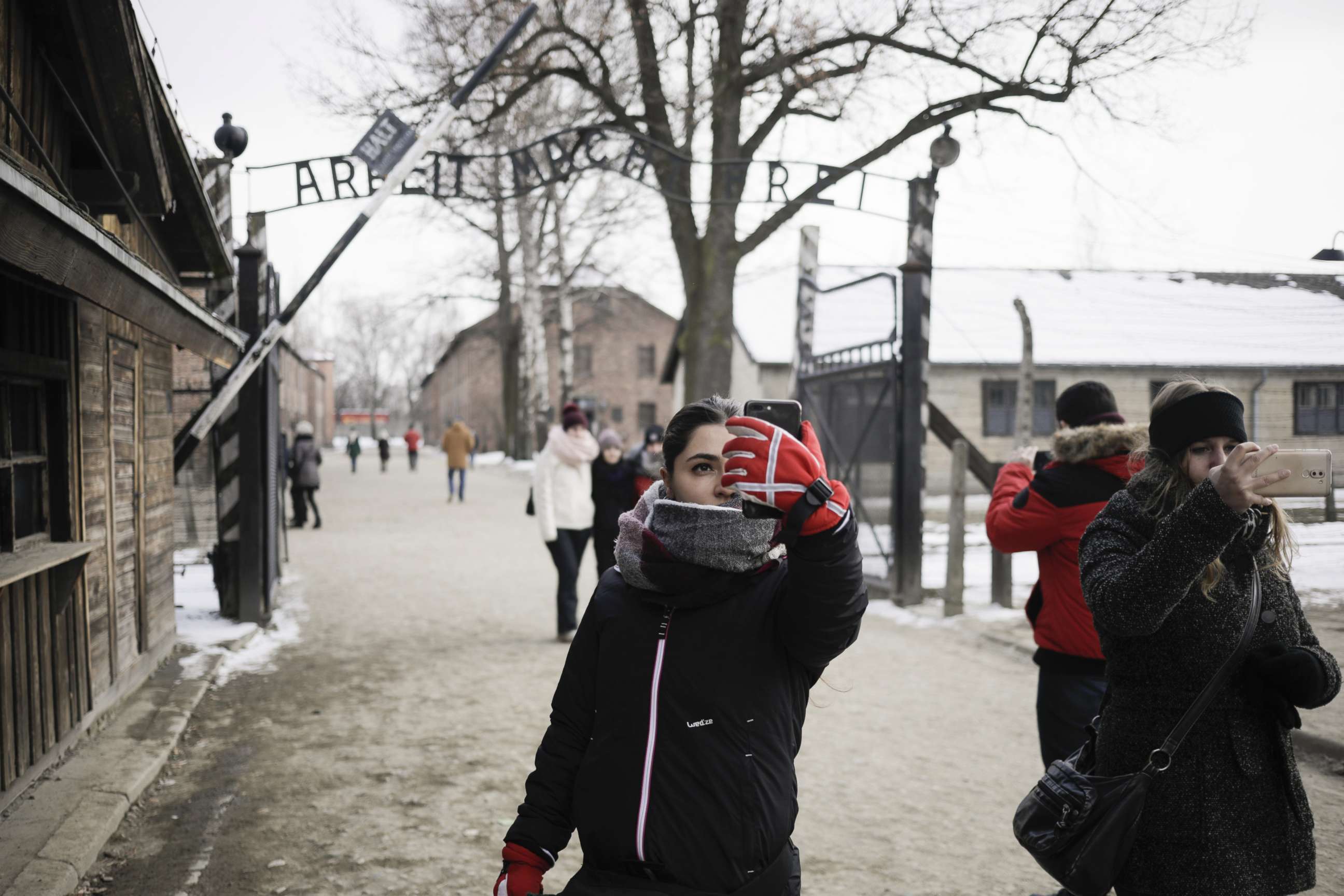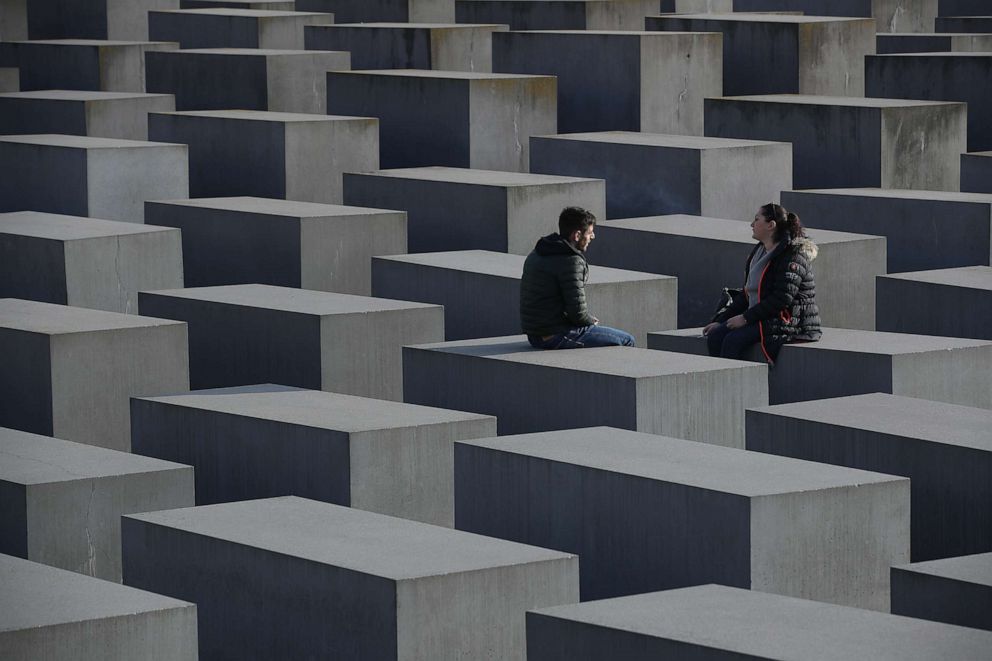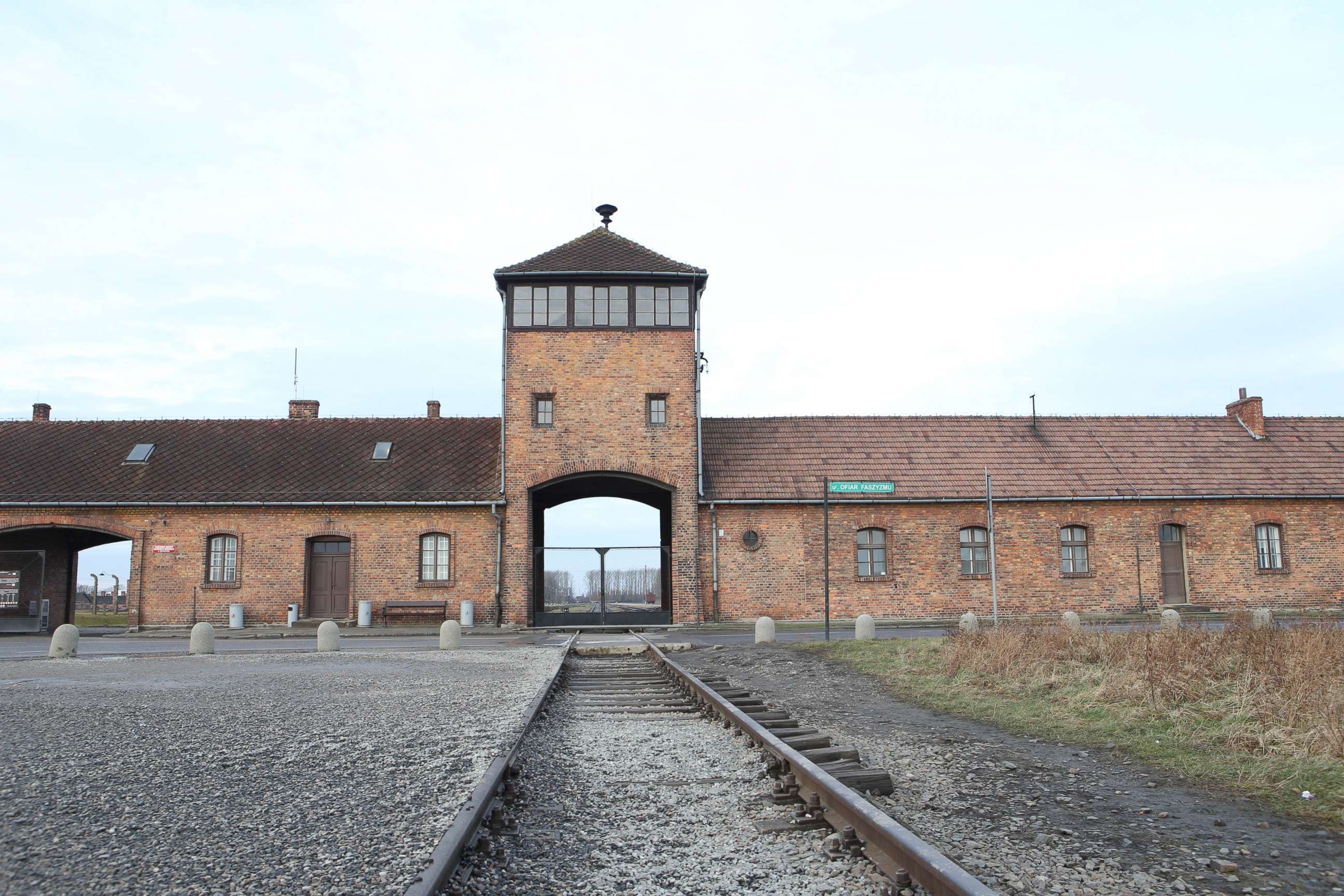When a selfie goes too far: How Holocaust memorial sites around Europe combat social media disrespect
A tweet from the Auschwitz Museum reawakened a debate.
BERLIN -- Organizers at the Auschwitz Museum tweeted a plea last week for respect, asking visitors to stop posting selfies on the railway tracks leading into the building -- the same tracks that transported trainloads of prisoners during World War II.
“When you come to @AuschwitzMuseum remember you are at the site where over 1 million people were killed. Respect their memory. There are better places to learn how to walk on a balance beam than the site which symbolizes deportation of hundreds of thousands to their deaths,” museum officials said in the tweet.
In an age where social media has become ubiquitous, Holocaust memorials face a special challenge when it comes to educating their visitors about appropriate posts. While the debate is not new, it is bound to continue as social media sites become increasingly integrated into the lives of today’s youth and the Holocaust falls further into the past. The boundaries between acceptable and unacceptable photos can, at times, be fluid.
“One can find both ordinary photographs and the so-called 'selfies,' accompanied by a very emotional message, showing that the author of such a photograph knew where he was and such a photograph was intended to commemorate the visit,” Pawel Sawicki, Auschwitz Memorial press representative, told ABC News.
Social media is also important to the museum; it regularly posts photos on its Instagram account, many taken by visitors.

“There are also cases, however, when it is clearly visible that the authors of such photographs took the images for fun, without being aware of the place where they are, and sometimes the site of the former camp is used as a stage for stupid jokes,” Sawicki said.
When inappropriate photos appear — a rare occurrence, considering the museum sees 2.1 million visitors a year — the museum is swift to react.
One way is by publishing reminders, like the above tweet, but the preferred method is encouraging guests to take guided instead of self-led tours, which helps sensitize them to their surroundings, he said.
At other Holocaust memorials around Europe, social media use is seen largely as a positive development.
“’Selfies’ are a part of today’s cultural experience and the virtualization of the world,” said Günter Morsch, who directed the Sachsenhausen Memorial and Museum, a former concentration camp near Berlin, for 25 years. “In the virtual world, people try to integrate an authentic place into part of their own image and that’s actually something positive.”

Morsch has seen attitudes change toward Holocaust memorial sites, especially as fewer people from the generation who lived through the horror remains. Yet, overall, he is impressed: “The overwhelming majority of the 700,000 visitors a year behave appropriately.”
One of the hot-spots on the debate surrounding inappropriate social media behavior is Berlin’s Memorial to the Murdered Jews of Europe, comprised of 27,111 cement slabs of different heights. Its uneven concrete floors and vast expanse give visitors the feeling of losing themselves inside the labyrinthine interior. And its abstract design has prompted debates over how visitors should interact with it, as many choose to sunbathe on the stones or use them as a picnic spot.
In 2017, Israeli-German writer Shahak Shapira started a website called “Yolocaust” featuring the selfies of visitors to the Berlin memorial overlaid on photos of harrowing scenes from concentration camps — corpses and starved prisoners -- to highlight, in his view, how the photos were a sign of disrespect. The website caused a media flurry and received both praise for its boldness and criticism from some who felt it went too far.

The memorial’s designer, New York City-based architect Peter Eisenman, intended the space to be used freely, not necessarily as a sacred space.
“The concept is that it’s an open place and that visitors experience it for themselves and see what they want to do in this space, what it does to them,” Felizitas Borzym, a spokesperson for the memorial, told ABC News.
While few activities are expressly forbidden — aside from jumping on the stones and other activities that might be considered a safety hazard — the memorial is staffed with employees who might approach guests to speak with them if they see inappropriate behavior.
“We don’t forbid selfies, but if someone is doing a pose a little too much in the direction of too flashy, employees might mention to the person that this is perhaps not the right place for it while explaining what the memorial represents,” Borzym said. This type of dialogue, she said, is effective.
Selfies and other photos are also largely accepted, Borzym said. “People should explore the location with selfies as a person with their phone. To have photos of themselves in the location is really the way young people experience this memorial.”





